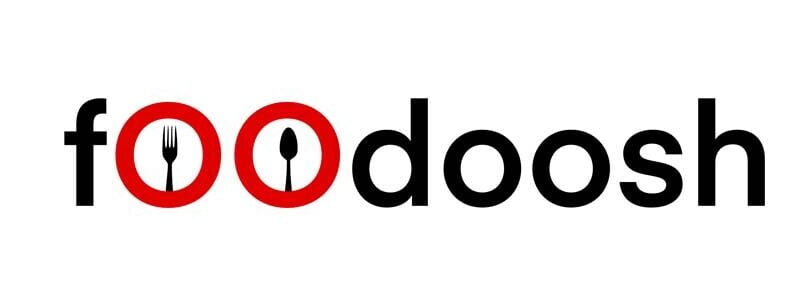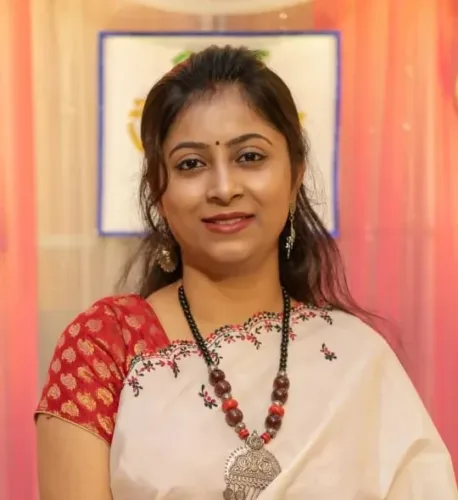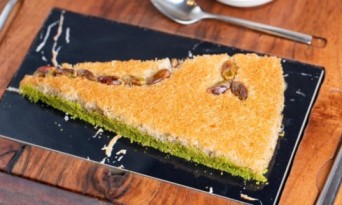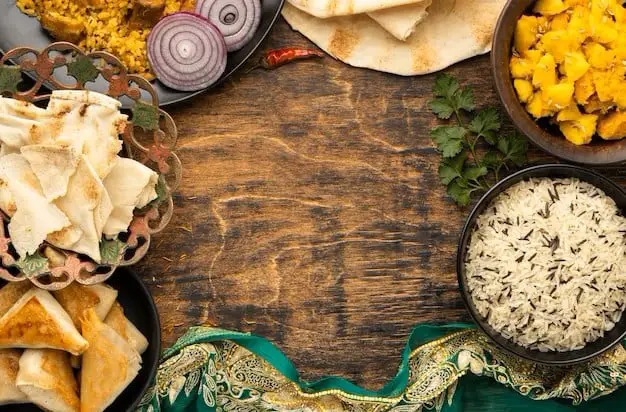Moong Dal Halwa is a rich and decadent Indian dessert that has been cherished for generations. This golden treat, made from split yellow lentils (moong dal), ghee (clarified butter), sugar, and milk, is often served at special occasions like weddings, festivals, and family gatherings. But what makes this halwa so special? Let’s dive into the recipe and learn how to make this indulgent sweet at home.
Table of Contents
A Glimpse into the History of Moong Dal Halwa
Moong Dal Halwa originates from Rajasthan, India. The region is known for its robust and flavorful cuisine, and halwas (dense, sweet confections) play a major role in their celebrations. Traditionally, the dish was made during winters because it provides warmth and energy, thanks to the richness of ghee, lentils, and sugar.
In Rajasthan, no wedding or celebration is complete without a serving of this delightful sweet. The halwa not only satisfies the sweet tooth but also carries symbolic importance, being a gesture of hospitality and goodwill.
Now that we know where it came from, let’s talk about why Moong Dal Halwa is so loved. The nutty flavor of the lentils combined with the richness of ghee and the sweetness of sugar makes for an unforgettable dessert. It’s soft, fragrant, and has a slight crunch from the roasting of the dal. The dish is made even better with the addition of cardamom and a garnish of dry fruits like almonds and cashews.
Ready to try making it yourself? Let’s walk through the process step by step.
Ingredients for Moong Dal Halwa
Before we begin, gather these ingredients to make sure the process is smooth and enjoyable:
- 1 cup Moong Dal (Yellow Split Lentils)
- 1 cup Ghee (Clarified Butter)
- 1 cup Sugar
- 2 cups Full-Fat Milk (Some people prefer using water instead, but milk adds creaminess to the halwa)
- ½ teaspoon Cardamom Powder (For a touch of fragrant sweetness)
- A handful of Dry Fruits (Cashews, Almonds, and Raisins)
- A pinch of Saffron strands (Optional but adds a luxurious touch)
Preparing for making halwa
- Time and Patience:
Moong Dal Halwa demands both! The slow roasting of the dal in ghee and the gradual absorption of milk are key to achieving the right texture. Don’t rush this process. The more time you give it, the richer and tastier your halwa will be.
2. Soaking the Moong Dal:
To get started, soak the moong dal in water for 4 to 5 hours. This helps soften the lentils, making them easier to blend and cook.
3. Prepare the Dry Fruits
Chop the cashews and almonds into small pieces. This helps them roast evenly and provides a nice crunch in the halwa. Keep the raisins whole.
4. Get Your Equipment Ready
Use a heavy-bottomed pan or kadhai for roasting the moong dal and making the halwa. This ensures even cooking and prevents the dal from burning. You’ll also need a blender or food processor to grind the soaked dal into a paste.
5. Heat the Ghee
Before you start, melt the ghee in a small pan and set it aside. This will save time when it’s time to add it to the dal during cooking.
6. Soak Saffron (Optional)
If you’re using saffron, soak a few strands in warm milk for about 10 minutes before adding it to the halwa. This enhances the flavor and gives the halwa a beautiful golden hue.
Once you have everything prepped, you’re ready to begin the actual process of making Moong Dal Halwa. Having everything prepared ensures the cooking process goes smoothly, and you can enjoy making this delicious dessert without any stress.
Step-by-Step Guide to Making Moong Dal Halwa
Step 1: Soak and Grind the Moong Dal
Soaking the moong dal is essential to ensure the lentils cook evenly. After soaking the dal for about 4-5 hours, drain the water. Next, blend the soaked moong dal into a coarse paste using a blender or food processor. Add just a few tablespoons of water if needed. The consistency should be thick and grainy, not smooth.
Step 2: Fry the Dry Fruits
Heat a tablespoon of ghee in a heavy-bottomed pan. Once hot, fry the dry fruits—cashews, almonds, and raisins—until they turn golden brown. Set them aside. These will be used to garnish the halwa later.
Step 3: Roast the Moong Dal Paste
Add the remaining ghee to the pan and let it to melt. When the ghee is heated, mix in the crushed moong dal paste. Now comes the most important part: roasting the moong dal paste.
This step requires patience. Keep stirring the dal over medium heat, ensuring it doesn’t stick to the pan. You’ll notice the paste start to change color and give off a lovely aroma as it cooks. Continue roasting for about 30-40 minutes, until the dal turns golden brown and the ghee separates from the mixture.
Step 4: Add Milk and Cook
Once the dal is well-roasted and golden brown, add the milk. Be careful, as the mixture may splatter a bit. Stir continuously to avoid lumps forming. Keep cooking until the dal absorbs the milk completely. This should take about 10-15 minutes.
Step 5: Add Sugar and Saffron
Once the milk is absorbed, it’s time to add sugar. The sugar will melt and make the halwa slightly liquidy again. Continue cooking and stirring until the halwa thickens once more. If you’re using saffron, soak a few strands in warm milk and add them at this stage for a burst of color and flavor.
Step 6: Add Cardamom and Dry Fruits
Once the halwa reaches the desired consistency (soft but not too runny), add the cardamom powder for fragrance. Mix it well into the halwa. Lastly, garnish with the fried dry fruits and give it one final stir.
Your rich, fragrant Moong Dal Halwa is ready to be served!

Pro Tips for the Perfect Moong Dal Halwa
1. Use a Heavy-Bottomed Pan
Moong Dal Halwa can easily burn if not cooked in the right vessel. A heavy-bottomed pan ensures even heat distribution, which is crucial for the slow roasting of the dal.
2. Roasting is Key
The slow and steady roasting of the moong dal in ghee is what imparts its unique flavor. Don’t rush this process. If you see the ghee separating from the dal, it’s a good sign that you’re on the right track.
3. Consistency Matters
Moong Dal Halwa is best when it’s not too thick or too runny. It should be soft enough to scoop with a spoon but still hold its shape when served.
4. Adjust Sweetness
Depending on your preference, you can adjust the amount of sugar in the halwa. If you like a less sweet dessert, you can reduce the sugar slightly without compromising the taste.
Serving Suggestions
Moong Dal Halwa is best enjoyed warm. Serve it fresh off the stove or reheat it gently if serving later. It pairs wonderfully with a hot cup of chai or a glass of warm milk.
For a festive touch, serve the halwa in small earthen bowls (known as ‘kullads’) and top it with a sprinkle of edible silver leaf (varak) for a truly royal presentation.
Health Benefits of Moong Dal Halwa
Despite being a rich and indulgent dessert, Moong Dal Halwa does offer some nutritional benefits.
1. High in Protein : Moong dal is a great source of plant-based protein, which is essential for muscle repair and overall health.
2. Boosts Energy : Thanks to the ghee and sugar, this dessert is packed with energy, making it perfect for special occasions when you want to indulge without worrying too much.
3. Improves Digestion : The ghee used in halwa has properties that aid digestion, making it a great dessert choice after a heavy meal.
4. Rich in Nutrients : The dry fruits added to the halwa—like almonds, cashews, and raisins—are rich in healthy fats, fiber, and essential nutrients, which enhance the dish’s overall nutritional profile.
Nutrition Chart for Moong Dal Halwa (per 100g serving)
| Nutrient | Amount |
|---|---|
| Calories | 350-400 kcal |
| Carbohydrates | 45-50g |
| Protein | 7-9g |
| Fat | 18-22g |
| Saturated Fat | 10-12g |
| Fiber | 2-3g |
| Sugar | 25-30g |
| Sodium | 10-15mg |
| Calcium | 50-60mg |
| Iron | 2-3mg |
| Potassium | 200-250mg |
| Vitamin A | 150-200 IU |
| Vitamin C | 1-2mg |
Variations of Moong Dal Halwa
Like many traditional recipes, Moong Dal Halwa has its variations across different households and regions. Here are a few creative twists you can try:
1. Coconut Moong Dal Halwa
Add grated coconut to the halwa for an extra layer of flavor. Coconut pairs wonderfully with the nutty taste of moong dal, making the dessert even more indulgent.
2. Sugar-Free Moong Dal Halwa
For those who are health-conscious or diabetic, you can replace sugar with natural sweeteners like stevia or jaggery. While the taste may vary slightly, it’s still delicious!
3. Moong Dal Chocolate Halwa
Yes, you read that right! Add a couple of tablespoons of cocoa powder to the halwa for a chocolatey twist. It’s an unusual take on the traditional recipe but equally delicious.
Storing Moong Dal Halwa
Moong Dal Halwa stays fresh for up to a week if stored in an airtight container in the refrigerator. To reheat, simply warm it up in a microwave or over low heat on the stove with a splash of milk or water to bring back its soft texture.
FAQs for Making Moong Dal Halwa
1. Can I use less ghee in Moong Dal Halwa?
Yes, you can reduce the amount of ghee, but it might affect the taste and texture. Ghee is essential for the rich flavor and smooth consistency of the halwa. If you’re looking for a lighter version, try using a little less, but be aware that the halwa might not be as soft and decadent.
2. How long should I soak the moong dal?
Ideally, you should soak the moong dal for 4 to 5 hours. Soaking helps soften the lentils and makes them easier to blend and cook. If you’re short on time, soaking for at least 2 hours will work, but the texture might not be as smooth.
3. Can I make Moong Dal Halwa without milk?
Yes, you can substitute water for milk. While milk adds creaminess to the halwa, using water will still give you a good texture and taste. If you’re lactose intolerant or want a dairy-free option, water is a good alternative.
4. How do I avoid lumps while cooking the halwa?
To prevent lumps, make sure to stir the moong dal paste continuously while adding milk or water. Also, add the liquid slowly, in small amounts, while stirring constantly. This ensures the dal absorbs the liquid evenly without forming lumps.
5. Can I prepare Moong Dal Halwa ahead of time?
Yes, Moong Dal Halwa may be prepared ahead of time. Refrigerate it in an airtight jar for up to a week. To serve, reheat in the microwave or on the stove with a splash of milk or water to restore the original texture.
6. Why is my halwa not turning golden brown?
If your halwa isn’t turning golden brown, it may not have been roasted long enough. Roasting the dal takes time and patience, usually around 30-40 minutes. Keep stirring it on medium heat until you notice a change in color and a fragrant aroma.
7. Can I use jaggery instead of sugar?
Yes, you can substitute jaggery for sugar if you prefer a healthier or more traditional sweetener. Keep in mind that jaggery has a stronger flavor, and it might change the color of the halwa. Melt the jaggery separately and strain it before adding it to avoid any impurities.
8. Why is my halwa too sticky or runny?
If your halwa is too sticky or runny, it may not have cooked long enough after adding the milk and sugar. Keep cooking the mixture until it thickens and reaches a soft, spoonable consistency. Roasting the dal properly in ghee before adding liquid also helps in achieving the right texture.
9. How can I make the halwa healthier?
To make a healthier version of Moong Dal Halwa, you can reduce the amount of sugar and ghee. Alternatively, you can use jaggery instead of sugar, and add more dry fruits for a nutritious boost. However, keep in mind that these changes may alter the flavor and texture slightly.
10. Can I freeze Moong Dal Halwa?
Yes, you can freeze Moong Dal Halwa for up to a month. To reheat, thaw it at room temperature and then warm it in a microwave or on the stove. Add a little milk or water while reheating to maintain its smooth texture.
11. What if I don’t have cardamom?
Cardamom adds a lovely fragrance to the halwa, but if you don’t have it, you can skip it. You can also substitute it with a pinch of nutmeg or cinnamon for a different flavor profile.
12. Can I make Moong Dal Halwa in bulk for a large gathering?
Yes, Moong Dal Halwa is a great dessert for large gatherings. You can easily double or triple the recipe to serve more people. Just ensure you have a large enough pan to cook the halwa evenly, and be prepared to spend a little more time roasting the dal.
13. Why is my halwa burning at the bottom?
If your halwa is burning at the bottom, it may be due to cooking on too high heat or not stirring frequently enough. Always cook halwa on medium to low heat, and stir continuously to prevent it from sticking to the bottom of the pan.
14. Can I use pre-ground moong dal instead of soaking and grinding?
While it’s possible to use pre-ground moong dal, the texture might not be as smooth and authentic as using soaked and ground dal. The soaking and grinding process gives the halwa its unique grainy texture.
Conclusion
Moong Dal Halwa is a dessert that never fails to impress. Whether you’re making it for a special occasion or just to satisfy your sweet tooth, its rich flavors and creamy texture are sure to be a hit with everyone. The best part? You don’t need to be an expert chef to make it. With just a few ingredients and some patience, you can recreate this timeless Indian dessert in your kitchen.
So, what are you waiting for? Get your ingredients ready, and let the sweet magic of Moong Dal Halwa fill your home!
Moong Dal Halwa | Mung Daal Halva
Moong Dal Halwa is a rich, indulgent Indian dessert that transforms humble yellow lentils into a luxurious treat. This recipe begins with soaking and grinding moong dal into a smooth paste, which is then slowly cooked in generous amounts of ghee (clarified butter). As it simmers, the dal paste gradually changes color and texture, becoming golden and fragrant. Sugar and milk are added, creating a luscious, creamy consistency. The halwa is flavored with cardamom and garnished with nuts, typically almonds or pistachios, adding aromatic depth and a delightful crunch. The result is a warm, comforting dessert with a unique texture - soft and slightly grainy, yet melt-in-your-mouth smooth. It's a perfect balance of sweet and nutty flavors, embodying the essence of traditional Indian sweets. While time-consuming to prepare, the effort is rewarded with a dessert that's not only delicious but also steeped in cultural significance, often served during festivals and special occasions.
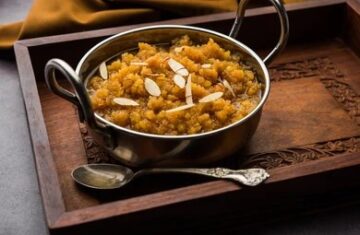
Ingredient List
Instructions
recipe details
-
Soak the moong dal
- Rinse 1 cup of moong dal thoroughly under running water.
- Soak it in water for at least 4 to 5 hours. This helps soften the lentils, making them easier to grind and cook.
- After soaking, drain the water completely from the moong dal.
-
Prepare the Dal Paste
- Place the soaked and drained moong dal into a blender or food processor.
- Grind it into a coarse, grainy paste.
- Add just a small amount of water if needed to aid blending, but keep the paste thick.
-
Fry the Dry Fruits
Heat 1 tablespoon of ghee in a heavy-bottomed pan.
Once hot, add the chopped cashews and almonds.
Fry them until golden brown. Remove the dry fruits and set them aside for garnish.
-
Roast the Moong Dal Paste
- In the same pan, add the remaining ghee (around 1 cup).
- Let it melt over medium heat.
- Add the ground moong dal paste to the melted ghee.
- Stir continuously over medium heat to prevent the dal from sticking to the pan.
- Roast the dal for 30-40 minutes until it turns golden brown, and the ghee starts to separate from the dal.
- The dal should have a nutty aroma at this stage.
-
Add Milk and Cook
- Continue to stir and cook until the moong dal absorbs all the milk and thickens.
- This process will take around 10-15 minutes.
- The dal will start to leave the sides of the pan when it's ready.
-
Add Sugar
- Once the milk is absorbed, add 1 cup of sugar to the mixture.
- Stir continuously until the sugar dissolves and blends with the dal.
- The halwa will become slightly liquidy again.
-
Cook the halwa
- Continue cooking until the halwa thickens once more and reaches a soft, spoonable consistency. Stir frequently to avoid burning.
- If you're using saffron, soak a few strands in warm milk for a few minutes, then add it to the halwa at this stage for enhanced flavor and color.
-
Final Touches
-
Add cardamom powder: Once the halwa thickens, sprinkle ½ teaspoon of cardamom powder into the mixture for a sweet, aromatic touch. Mix it well into the halwa.
-
Garnish with dry fruits: Finally, add the fried cashews, almonds, and raisins. Stir them into the halwa for a delightful crunch.
-
-
Serve the Halwa
Serve hot: Moong Dal Halwa is best served warm. Spoon it into bowls and enjoy the rich, nutty, and fragrant flavors of this classic Indian dessert.
